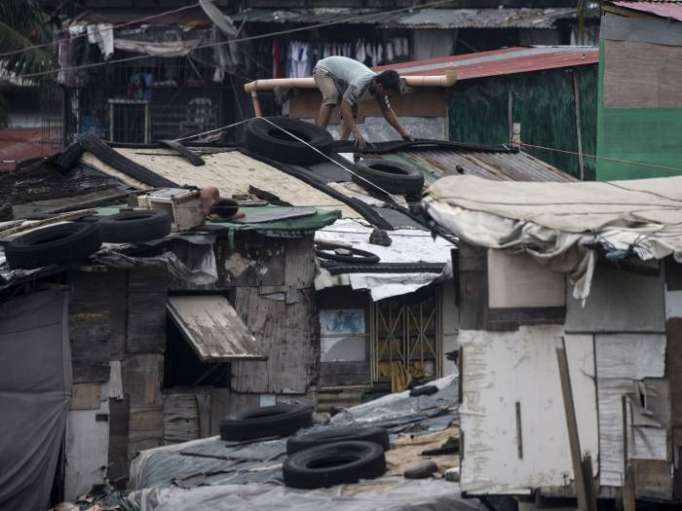A massive evacuation is under way as the storm, which is equivalent to a category five Atlantic hurricane, approaches at the start of the rice and corn harvesting season.
Typhoon Mangkhut, known locally as Ompong, is travelling at 15mph, with maximum sustained winds of 127mph and gusts of up to 158mph, and is expected to make landfall within hours.
The Philippine Atmospheric, Geophysical and Astronomical Services Adminstration (PAGASA) are warning that rice and corn crops "may suffer heavy losses". Moderate to heavy damage is also expected to coconut trees, banana plants and buildings of light to medium construction.
"People are advised to seek shelter in strong buildings, evacuate low-lying areas and stay away from the coasts and river banks," the agency said.
Civil defence chief Ricardo Jalad told an emergency meeting led by President Rodrigo Duterte that about 4.2m people in Cagayan, Isabela and outlying provinces are vulnerable to the most destructive effects near the typhoon's 125km- (77-mile)-wide eye. Nearly 48,000 houses in those high-risk areas are made of light materials.
Mr Jalad said 1.1bn Philippine pesos (£15.5m) of cash, family food packs and relief goods was available for the affected areas.
"The Department of Health has made available 28 health emergency management teams, which can be tapped in the event it is necessary to be deployed in those four regions," he added.
President Duterte asked Cabinet officials from the north to help oversee disaster-response work if needed, and told reporters it was too early to consider seeking foreign aid.
"It would depend on the severity of the crisis," Mr Duterte said. "If it flattens everything, maybe we need to have some help."
Residents across the north have covered glass windows with wooden boards, strengthened houses with rope and braces and moved fishing boats to safety.
Manila, the capital, is one of nearly 40 northern and central provinces under storm warnings and many government offices have shut early.
The capital, Manila, and more than three dozen northern and central provinces have been placed under storm warnings. Classes have been suspended and government offices shut early in more than 600 places, while military personnel, medical and emergency response teams were put on standby.
The typhoon is also expected to bring surges of floodwater up to six metres above sea level, as well as intense rains that could set off landslides.
Mangkhut, a Thai word for the mangosteen fruit, is the 15th storm this year to batter the Philippines, which is hit by about 20 a year and is considered one of the world's most disaster-prone countries.
Mangkhut is expected to hit the northeast coast of Luzon in the Philippines at around 2am local time on 15 September (7pm on Friday 14 September UK time).
It has already felled trees and power lines in Guam, a US Western Pacific territory, forcing hundreds of people to flee to emergency shelters and schools overnight.
One family has set up an internet fundraising page after their home was completely destroyed in the storm. Redina Perez, a mother-of-three, told reporters: "It hurts and I'm in pain because there's nothing left."
After passing through the northern part of Luzon island, Mangkhut is due to hit the Chinese mainland south of Hong Kong early on Monday morning.
Although it is expected to weaken from a super typhoon to a severe typhoon, more than 100,000 residents in the southern province of Guangdong have been moved to safety or sent home and at least 3,700 shelters have been set up.
Train services between the cities of Zhanjiang and Maoming have been suspended and all ferry services between the Guangdong and Hainan have been put on hold.
The Global Disaster Alert and Coordination System said the typhoon is "expected to have a high humanitarian impact" based on its strength and the high number of people, up to 36.7m, likely to be affected by wind speeds of more than 120mph (75mph).
The Independent
More about: Philippines
















































